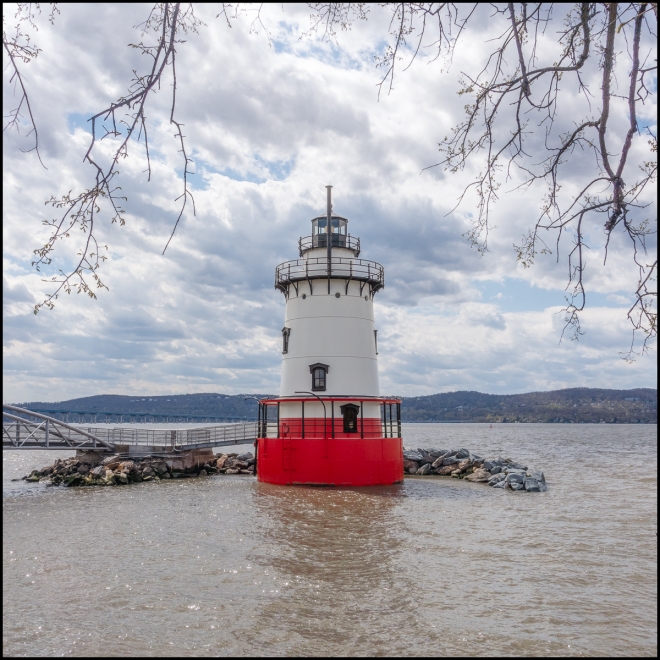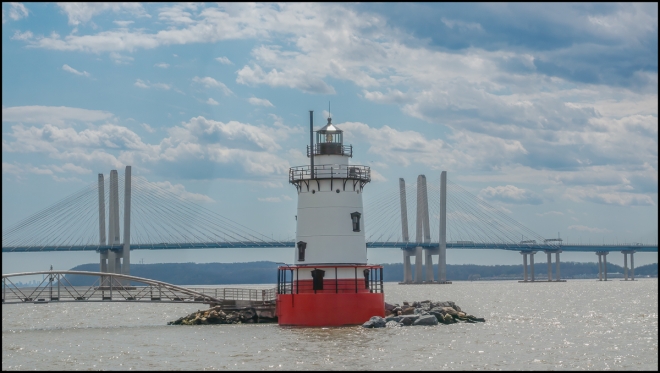According to Hudson River Lighthouses:
The Sleepy Hollow Lighthouse is unique among Hudson River lighthouses – it is the only “sparkplug” style lighthouse to contain family quarters. Unlike Jeffrey’s Hook, which is essentially a cast iron housing for a staircase, Sleepy Hollow’s brick-lined walls held five floors of living space. The first and largest floor contained the kitchen, dining room, and living room. The second and third floors contained one large bedroom apiece. The fourth floor contained a smaller bedroom and a work room. The fifth floor, which had no windows, just small portholes, was the watch room, where the keeper could keep an eye on the river during storms and other weather, safely out of the wind and wet and out of the way of the light. Another unique feature of the Sleepy Hollow light is the glass inserts laid into the floor of the tower room, which allowed natural light from the tower’s 360 degree windows down into the watch room. Originally a fixed red light, in 1902 the lighthouse was updated to a white, rotating light.
Constructed in 1883, the cast iron caisson was pre-fabricated, as was the trend at that time. The need for a lighthouse off the coast of that section of Westchester County became apparent as early as the 1840s, when pole lights were all that warned mariners away from the dangerous shoals. When the Federal Government started seeking land to purchase to construct a lighthouse, they first looked to Ossining (then known as Sing Sing), but the landowner got wind of the impending sale and the amount he asked for was too much for the government’s budget. The same thing happened again when looking for land near Tarrytown. Eventually, it was decided to locate the island a half mile offshore of Kingsland Point, neatly solving the dilemma of purchasing land.
In the 1940s the interior of the lighthouse was updated with modern sanitation and electricity. The light was automated in 1955, and with the completion of the Tappan Zee Bridge just to the south in 1957, the keeper became unnecessary. Soon, even the automated light was deactivated, in 1961. The lights of the bridge proved to be ample navigation aid for mariners.
In addition, in 1959, the Federal government declared all but one hundred feet of land around the lighthouse to be “surplus” property available for sale. Never mind the fact that the “land” was underwater. It was quickly purchased by the nearby General Motors Plant, who raised that “land” with fill to expand their operations, leaving the Sleepy Hollow Lighthouse, formerly a half mile off shore, within 100 feet of the shoreline. In the 1970s, Westchester County secured an easement from General Motors to build a pedestrian walkway out to the lighthouse, which was completed in 1975. Today, the lighthouse is managed by the Village of Sleepy Hollow Recreation & Parks Department and is considered part of the Kingsland Point Park.
With Tappan Zee bridge in the background.
Taken with a Sony RX100 M3



